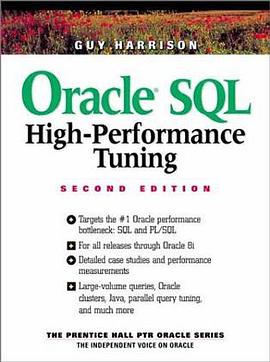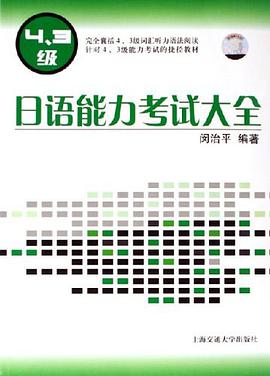

Introduction This book is about tuning Oracle databases and applications with an emphasis on the tuning of SQL statements. Tuning SQL is not the only way to tune an application: The design of an application will often dictate its performance limits, and tuning the physical layout of an Oracle database can be critical to reaching those limits. However, tuning SQL is usually the most cost-effective way of improving the performance of an existing application, while other measures such as changing database parameters or altering disk layouts will usually be ineffective unless the application's SQL is properly tuned. It is common for the performance of an Oracle application to appear to be acceptable during development only to degrade abruptly when the application encounters production data volumes or transaction rates. While this may result from a number of causes, inefficient SQL that fails to maintain good performance as data volumes increase is a major factor. Poorly performing SQL arises in applications for a number of reasons. Although SQL is a relatively easy language to learn, its nonprocedural nature tends to obscure performance-related issues. As a result, its much harder to write efficient SQL than it is to write functionally correct SQL. Additionally, there seems to be insufficient awareness of the need to monitor carefully and tune SQL performance, and the tools and techniques needed to tune SQL are not sufficiently well known. Another factor that has increased the significance of well-tuned SQL is the emergence of data warehouses or On-Line Analytical Processing (OLAP) systems. These databases are often extremely large and are subject to a great deal of ad hoc query activity. If the SQL that supports these queries is inefficient, then queries may take hours or even days to complete or may fail to complete at all. When Oracle applications start to underperform, it's typical for performance experts to be called in to perform benchmark tests or tune the Oracle database engine. For the most part, they will tune the operating system, change Oracle configuration parameters, reconfigure input/output (I/O), disks and so on. At the end of the process, you can (if you are lucky) expect a 10 to 20 % improvement in performance. During these tuning exercises it is usually that apparent the SQL contained within the application is the most important factor in determining performance. If the SQL can be tuned, then performance increases of 100 percent or more are not uncommon. But there is a dilemma: By the time performance problems are recognized, it is often difficult to make changes to the production SQL. Furthermore, performance experts usually don't have the application knowledge required to understand and tune the SQL, while the developers don't have the necessary understanding of SQL performance tuning. It follows that the best way to improve substantially the performance of most Oracle applications is to improve the efficiency of the application SQL. To make this happen, developers needed to acquire SQL tuning skills together with a commitment to tuning. The objective of this book is to provide SQL programmers with the theory and practice of SQL tuning together with hints and guidelines for optimizing specific SQL statement types. We'll see how to diagnose and correct problems with existing SQL and briefly explore performance issues beyond SQL tuning, such as application design and server tuning. By following the guidelines in this book, SQL programmers should be able to write SQL that will perform well both in development and in production and will be able to detect and correct inefficiencies in existing SQL. The result will be SQL that performs to its peak potential. The need for this book With the Oracle server documentation set consisting of more than a dozen manuals including a tuning guide and a number of independent Oracle tuning texts on the market, is there really a need for this book? There is a need, and the basis for this need lies in two fundamental imperfections in all alternative tuning guides: They are aimed almost exclusively at database administrators (DBAs), and they gloss over the processes of tuning SQL statements. There is a need for a book that is aimed not at the administrators of the Oracle databases, but at those writing the access routines (that is, the SQL) for the database, such as application developers, users of data warehouses, and others whose work involves writing high-performance SQL. Additionally, while tuning the database engine can help poorly performing applications, nothing can match improving the efficiency of SQL for getting massive performance improvements. Unfortunately, most tuning texts spend most of their time focusing on database and I/O subsystem tuning. Who should use this book This is not a book for Oracle DBAs, although DBAs should find many things of interest here. Rather, this is a book for anyone who needs to write SQL that has a performance requirement. People who need to write high-performance SQL are as follows: Developers of Oracle-based applications. These developers will typically need to embed SQL statements within the code of the development tool (such as C++, Java, or Visual Basic). Alternately, the SQL may be contained within stored procedures that they will call from their client tool. These SQL statements will need to be efficient; otherwise the applications concerned will fail to meet reasonable performance requirements. Those querying data warehouses or decision-support databases. These databases are typically very large and hence these queries must run efficiently; otherwise they may take an unreasonable time to complete (or not complete at all). Anyone who writes Oracle SQL statements and cares about their response time or throughput. How to use this book Few people read a book of this type from beginning to end. Depending on your background, you may wish to skip sections that review database theory and jump right into the details of SQL tuning. However, apart from the "Review of SQL" and the "Beyond SQL Tuning" sections, most readers should attempt to read or at least review the majority of this book. The book has the following major sections: Part I: Introduction to SQL Tuning This section contains a review of the importance of SQL tuning, an overview of the tuning process and a review of SQL. The chapters in Part I are as follows: Chapter 1: Introduction to SQL Tuning Chapter 2: SQL Tuning Quick Start Chapter 3: Review of SQL Part II: SQL Tuning theory Chapters in Part II introduce a number of important topics, such as the role of the query optimizers, indexing and hashing concepts, SQL parsing, basic data retrieval strategies, and tools for explaining and tuning SQL execution. Although Part II is heavy on theory, its difficult to tune SQL successfully without at least a broad understanding of these topics. All readers are therefore encouraged to read this section. The chapters in Part II are as follows: Chapter 4: SQL Processing Internals Chapter 5: The Optimizer Chapter 6: Indexing and Clustering Chapter 7: Tracing and Explaining SQL Part III: SQL Tuning in Practice Chapters in Part III contain tuning guidelines for specific SQL statement types and circumstances. While it will be useful to read Part III from start to finish, it may also be used as a reference. You may wish to consult the relevant portions of this section as appropriate tuning requirements arise. Chapters in Part III are as follows: Chapter 8: Tuning Table Access Chapter 9: Tuning Joins and Subqueries Chapter 10: Sorts, Aggregates, and SET Operations Chapter 11: Parallel SQL Chapter 12: Optimizing DML Chapter 13: VLDB and Warehousing Chapter 14: Using and Tuning PL/SQL Chapter 15: Using and Tuning Oracle Java Chapter 16: Oracle Object Types Chapter 17: Miscellaneous Topics Part IV: Beyond SQL Tuning At the beginning of the application life cycle, effective database and application design can define the constraints that will ultimately determine the limits on your SQL's performance. For a well-designed application with tuned SQL, the configuration of your database disk layouts, SGA configuration, etc. may be the key to getting further gains in performance. Chapters in Part IV discuss these "beyond SQL" issues: Chapter 18: Application Design Issues Chapter 19: Oracle Server Design Chapter 20: Oracle Server Tuning Appendices The appendices contain details of configuring client programs and the Oracle server for specific circumstances, a reference guide, and a guide to further reading and other resources. The Sample Database Whenever possible, any SQL tuning principle in this book will be illustrated with an example SQL statement. Usually, these SQL statements will be based on the sample database shown in Figure P-1. This database is not intended to illustrate good or bad data modeling principles but to be a basis for illustrating a wide range of SQL statements. You can find an export of one of the variations of this database at the book's website. The sample database implements a simple and familiar business schema containing Customers, Employees, Products, and Sales. In addition, the database contains the results from an imaginary marketing survey in the Subjects and Scores table. Many different physical implementations of this logical schema were implemented during the development of the book. For instance, the Sales table was subjected to a variety of partitioning schemes, the Customer table was represented in one example as an Index-Organized table, while Subject and Score data were represented in a variety of ways including nested tables, Varrays, and object tables. Many of the examples contained in this book are accompanied with a graphical illustration of the performance gains that can be achieved by various optimizations. These performance measurements were collected on a range of computer hardware, ranging from a high-end UNIX host to a Pentium laptop. Performance measurements are shown in either elapsed times or logical database I/Os ("block reads"), whichever was most appro...
具体描述
读后感
偶然间在同事的桌上,看到了这本的原版英文书,快速浏览了几章。 的确是好书,Guy Harrison的经典之作,没给5星的原因: 一是写得比较早,基于8i~9i为主,有些特性和限定已经不适应于新的10g和11g,看的时候需要带着测试的精神去实践 二是书包含的内容太多了,630页的书,讲了...
评分偶然间在同事的桌上,看到了这本的原版英文书,快速浏览了几章。 的确是好书,Guy Harrison的经典之作,没给5星的原因: 一是写得比较早,基于8i~9i为主,有些特性和限定已经不适应于新的10g和11g,看的时候需要带着测试的精神去实践 二是书包含的内容太多了,630页的书,讲了...
评分偶然间在同事的桌上,看到了这本的原版英文书,快速浏览了几章。 的确是好书,Guy Harrison的经典之作,没给5星的原因: 一是写得比较早,基于8i~9i为主,有些特性和限定已经不适应于新的10g和11g,看的时候需要带着测试的精神去实践 二是书包含的内容太多了,630页的书,讲了...
评分偶然间在同事的桌上,看到了这本的原版英文书,快速浏览了几章。 的确是好书,Guy Harrison的经典之作,没给5星的原因: 一是写得比较早,基于8i~9i为主,有些特性和限定已经不适应于新的10g和11g,看的时候需要带着测试的精神去实践 二是书包含的内容太多了,630页的书,讲了...
评分偶然间在同事的桌上,看到了这本的原版英文书,快速浏览了几章。 的确是好书,Guy Harrison的经典之作,没给5星的原因: 一是写得比较早,基于8i~9i为主,有些特性和限定已经不适应于新的10g和11g,看的时候需要带着测试的精神去实践 二是书包含的内容太多了,630页的书,讲了...
用户评价
非常经典的Oracle SQL Tuning书籍
评分非常经典的Oracle SQL Tuning书籍
评分非常经典的Oracle SQL Tuning书籍
评分非常经典的Oracle SQL Tuning书籍
评分非常经典的Oracle SQL Tuning书籍
相关图书
本站所有内容均为互联网搜索引擎提供的公开搜索信息,本站不存储任何数据与内容,任何内容与数据均与本站无关,如有需要请联系相关搜索引擎包括但不限于百度,google,bing,sogou 等
© 2025 onlinetoolsland.com All Rights Reserved. 本本书屋 版权所有




















